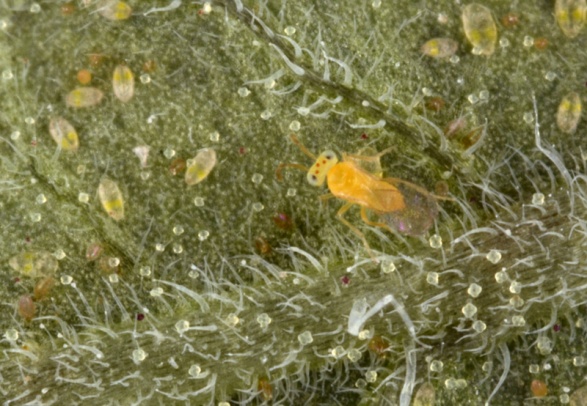
Eretmocerus eremicus Rose and Zolnerowitch
Eretmocerus mundus Mercet
(Insecta: Hymenoptera: Aphelinidae)
Eretmocerus spp. are solitary endoparasitic wasps and key natural enemies of the sweetpotato whitefly, Bemisia tabaci.
The minute female wasps are less than a millimeter long. They have a pale yellow head and legs, a yellowish-orange thorax and abdomen, light brown antennae, and transparent wings.
The female wasp deposits an egg underneath a suitable host nymph. All instars may be parasitized, but second instars are preferred. The hatching larva then burrows into the host and completes its development through three instars while the host remains alive. The host dies when the wasp larva pupates after about 12 days.
Eretmocerus eremicus is native species of the southern desert areas of California and Arizona and is well adapted to hot climates. Eretmocerus mundus is native to the Mediterranean region. Both species are commercially available worldwide for biocontrol of whiteflies.
Images
To save the Web-optimized images shown below to your hard drive:
PC users: right click to "Save Picture (or Image) As..."
Mac users: click and drag to your desktop.

Dorsal view of adult Eretmocerus eremicus Rose and Zolnerowitch on a leaf infested with eggs and nymphs of sweetpotato whitefly, Bemisia tabaci
(Photographer: Lyle Buss, University of Florida)
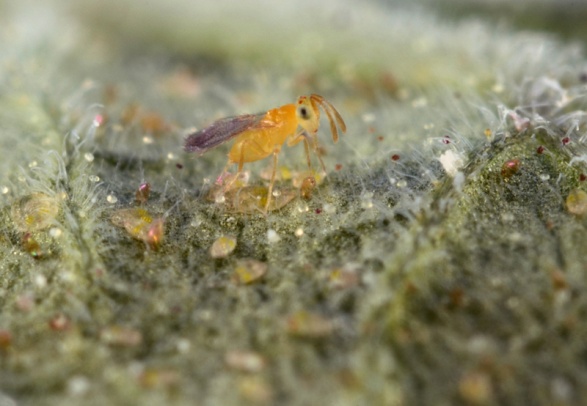
Adult Eretmocerus eremicus Rose and Zolnerowitch examining a nymph of sweetpotato whitefly, Bemisia tabaci
(Photographer: Lyle Buss, University of Florida)
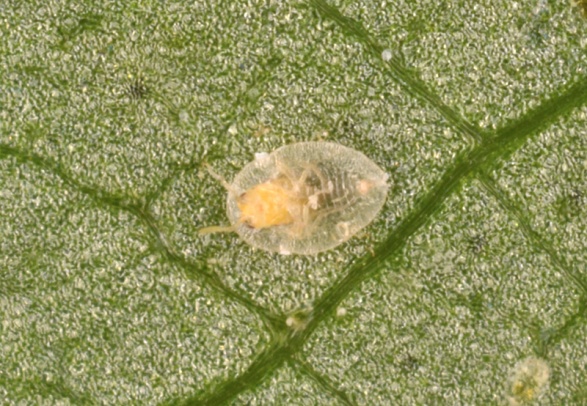
Adult Eretmocerus eremicus Rose and Zolnerowitch emerging from a parasitized nymph of sweetpotato whitefly, Bemisia tabaci
(Photographer: Lyle Buss, University of Florida)
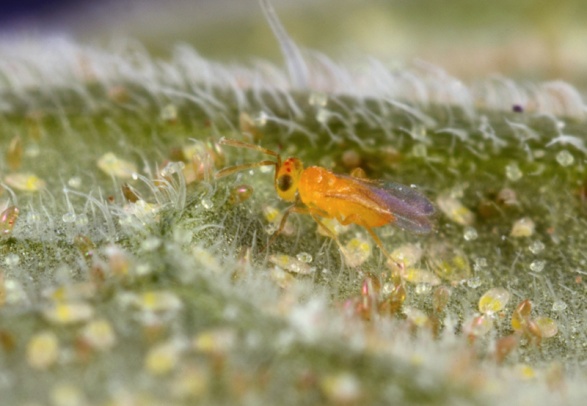
Dorsolateral view of adult Eretmocerus mundus Mercet on a leaf infested with eggs and nymphs of sweetpotato whitefly, Bemisia tabaci
(Photographer: Lyle Buss, University of Florida)
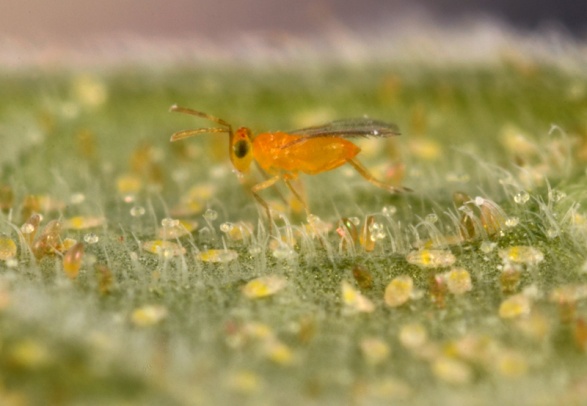
Lateral view of adult Eretmocerus mundus Mercet on a leaf infested with eggs and nymphs of sweetpotato whitefly, Bemisia tabaci
(Photographer: Lyle Buss, University of Florida)